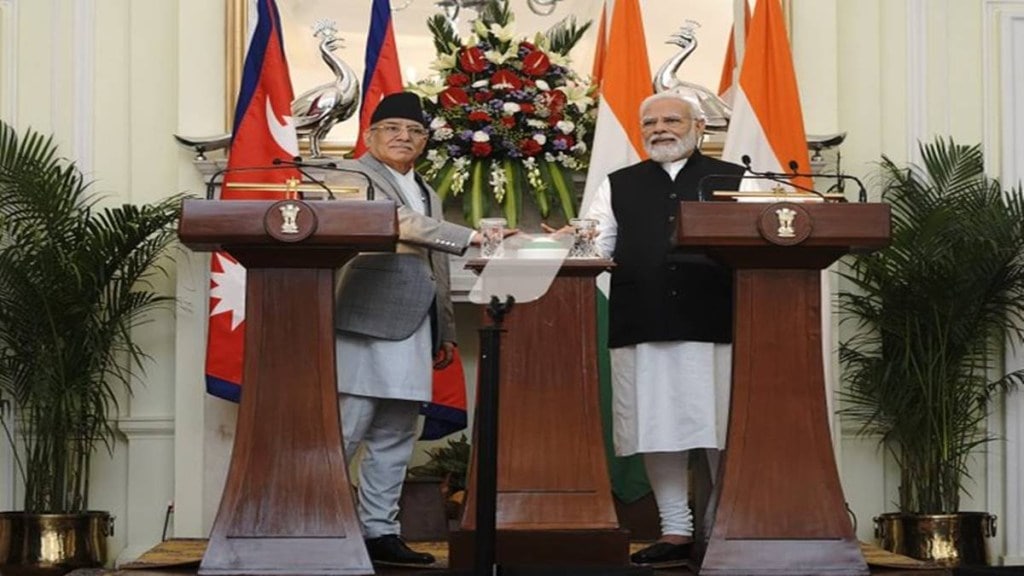Prime Minister Narendra Modi and Nepalese Prime Minister Pushpa Kamal Dahal ‘Prachanda’ held wide ranging talks in New Delhi focused on boosting cooperation between the two countries in several areas including trade, energy and connectivity infrastructure.
At the end of talks Prime Minister Narendra Modi and his Nepalese counterpart witnessed the inking of seven documents in various sectors including energy, trade, connectivity infrastructure among others. They also announced the completion of a long-term power trade deal.
This Long Term Power trade Agreement will give more strength to the power sector of both countries, Prime Minister Modi said at a joint briefing in Hyderabad House, New Delhi. Under this agreement India will import around 10,000 MW from the Himalayan nation over the next 10 years
This is the Nepalese PM’s first visit to India since he became the prime minister last December.
In a special briefing Foreign Secretary Vinay Kwatra said: “In India’s “Neighbourhood First Policy’’ Nepal occupies a very special place.” Adding, India’s relationship with Nepal is unique and characterised by open borders and civilisational ties that are anchored in our shared cultural and religious traditions manifesting strong people-to-people linkages.
He said that the discussions between the two leaders and the outcomes cover the entire spectrum of bilateral cooperation, including energy, connectivity, infrastructure cooperation, political, economic, trade, and also development partnership.
He clarified that the issue of Agniveer Scheme of the Indian government did not feature in the talks between the two leaders.
The two leaders signed a project development agreement for the 669 MW Lower Arun Hydro Project. The project was approved by Nepal’s Investment Board days before PM Prachanda’s visit to India.
Also India is developing the mega 900 MW Arun-III hydroelectric project in the Himalayan nation. There is also a 490 MW Arun-4 hydro electric project in the pipeline.
Both sides exchanged seven documents. These included the expansion of a petroleum pipeline, digital payments and inauguration of railway facilities.
The India-Nepal Transit Treaty, 1992 was renewed. This means that Nepal can now use new rail routes as well as inland waterways.
The two leaders announced the extension of the Motihari-Amlekhgunj to Chitwan. And also the construction of a new pipeline along with storage terminals between Siliguri and Jhapa in eastern Nepal.
Integrated Check posts at Rupaidiha in India and Nepalgunj in Nepal were virtually flagged off by the two leaders.
Handing over of Kurtha-Bijalpura section of railway line.
Sushma Swaraj Institute of Foreign Service (SSIFS) and the Institute of Foreign Affairs, Nepal sign an MoU.
MoU for the development of infrastructure at Dodhara Chandani check post along Indo-Nepal Border.
Also, MoU between NHPC and VUCL, Nepal for the development of Phukot Karnali Hydroelectric Project
NPCIL and NCHL, Nepal for cross border payments sign a MoU.
The two leaders witnessed the inaugural run of an Indian railway cargo train from Bathnaha (India) to Nepal Customs Yard. This is the newly constructed rail link under grant given by the Government of India.
Ground Breaking Ceremony
ICPs at Bhairahawa (Nepal) and Sonauli (India).
Phase-II facilities under Motihari-Amlekhgunj Petroleum Pipeline.
Indian portion of Gorakhpur-Butwal Transmission Line being built by a JV of PGCIL and NEA.

